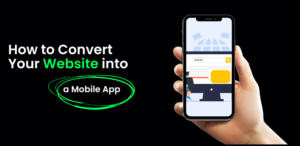Is Your Website Design Hurting Your Law Firm SEO?

A successful lawyer SEO campaign is usually a result of combined effort. Content writers, website designers, developers, and digital marketing experts have to work together to take your website to the top search engine results.
If one person in the team is not putting in work as they should, your entire SEO marketing campaign is at risk of failing. This is why most law firms opt to hire a digital marketing firm because you get all these resources under one roof.
One of the areas commonly overlooked is the actual website design. Your website’s appearance and user experience can make or break your web presence. Below are a few common issues to address to ensure your design is not hurting your online sucess.
Site Responsiveness
Is your website mobile-friendly? How well does it transfer while loading on different screen resolution sizes like tablets and desktops? These are some of the questions to ask when it comes to website responsiveness.
Search engine algorithms favor more responsive websites because mobile devices now account for approximately half of the internet’s traffic. If your law firm website is not optimized for responsiveness, you might be losing nearly half of your potential clients, as well as a chance to rank top on the results page.
Navigation
Site navigation refers to how easy it is for visitors to find what they are looking for on your website. The primary way to achieve this is by creating a solid navigation system so users know where to go and what to next.
You can do so by having things like the search feature, clear categories, broad headings, and relevant subheadings. This amounts to a great user experience, which is important for law firm SEO.
Text Readability
If your design makes it difficult for site visitors to read the information needed, they are not going to hesitate to find it from your competitors. A high bounce rate sends the wrong signals to search engines and hurts your search engine ranking.
Start by adding sufficient white space between site elements and chunks of text. Next, identify the perfect fonts, sizes, and colors, and use them consistently across your copy to increase engagement rates.
Images and Visuals
Images, videos, illustrations, and other visuals attract clients to your website, but they can also hurt your SEO if they are not used properly.
First, ensure the file sizes are not big enough to slow down the site’s loading time because this will put off potential leads. Second, rename the files so they are relevant to your site while including a few keywords as well. Finally, your images and visuals should be relevant to the message of that particular page.
Visitors are going to be engaged by both the copy and visuals, which is likely to increase the time spent on your website.
Consistency
Your web designer is supposed to create a consistent brand across your website through the use of a style guide. This, in turn, increases brand recognition and awareness among potential clients.
Similarly, site visitors will not have a reason to leave your website, improving engagement rates and SEO rankings.
Consistency design can be realized through uniformity in things like typography, colors, images, style, and so on.
CTA (Call-to-Action) Buttons
By leading visitors to your website, you are ultimately hoping they will take a particular action such as fill a case evaluation form, subscribe to your newsletter, or convert to a client. Using a well-thought-out CTA button will guide your audience into taking the action.
The button’s design should be in harmony with the design but also stand out enough to be noticed. You can do this by using your brand’s colors that are likely to attract the eye while maintaining high contrast between the text and button colors as well.






